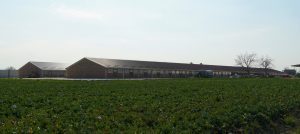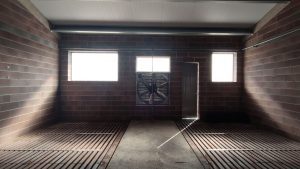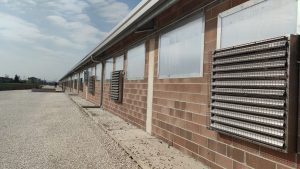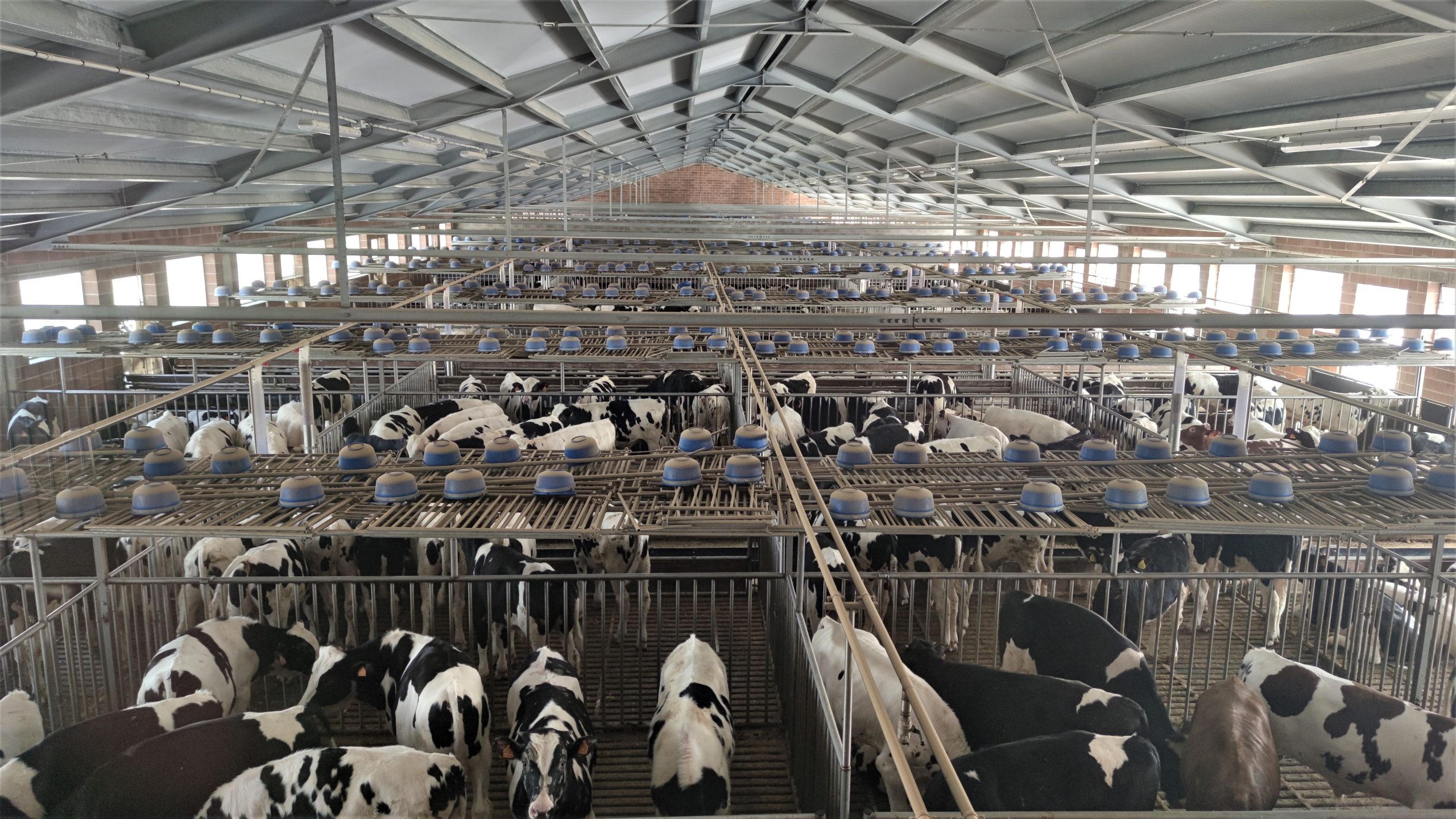We visited the farm Eredi Carra, an important Italian Company specialized in the production of white meat. We had the pleasure of meeting its owner, Mr. Stefano Carra, and visiting their barns and consequently the installation of Termotecnica Pericoli products.

Veal: historical notes about industrialization and organoleptic characteristics
The veal market in Italy finds its origins around the 1960s due to a surplus of small Friesian male veal production. Today, the demand for white meet is not very high, it is mainly consumed in France, Northern Italy, and Germany as well as small niches in Canada and New York.
Holland is the world’s leading producer of this type of food, producing 50% of it, and exporting up to 90%.
White beef is a valuable product with unique characteristics: the controlled levels of iron and the animal’s milk-based diet give it a light, almost pink color. It is a highly digestible, high-protein, low-fat food with a very tender texture on the palate.
The animals are slaughtered before 8 months of age, so it is young meat. Their diet is based on reconstituted powdered milk with the addition of cereals to improve the well-being and energy intake of each individual head. In its life cycle, a calf eats around 260kg of powdered milk and 400kg of cereals.
The importance of air quality in calves
Calves are very delicate animals and, given their young age, they more easily incur the risk of pathologies. The farmer is therefore required to take care of them with preventive measures that mainly focus on maintaining a healthy and clean environment. It’s not just about tidy boxes, clean food and teats, and scrupulously adhered hygiene protocols. Air quality also plays an essential role.
Thermal insulation, ventilation, and heating make it possible to monitor some potentially dangerous factors for the herd such as air circulation, amount of dust, relative humidity, harmful gases and ammonia, and air currents.
Obviously, creating an ideal microclimate for calves is not easy at all. There are countless factors that come into play and could influence the optimal parameters. Temperature and relative humidity can vary both on the basis of seasonality, but also on latitude, the type of breeding, and the quantity of food eaten by the animal.
The manual drawn up by CreNBA tells us that generally the optimal temperature range is considered between 16 and 22°C with an acceptable minimum of 14 and a maximum of 25°C.
Excessive cold can cause shivering, but also impair lung function. Cold stress in cattle can be controlled by guaranteeing the animals a dry environment so that their hair does not get wet, but also with a correct supply of food and regulating the speed of the air inside the barn.
In fact, the air currents facilitate the dissipation of heat around the body, creating a cooling situation (the so-called “windchill effect”) which in winter can become a problem that should not be underestimated.
On the other hand, during the hot season, continuous air exchanges and a higher air speed can alleviate the highly harmful and counterproductive heat stress for calves, but in general for all cattle.
The relative humidity rate generally recommended in white meat cattle farms is between 60 and 80% with an optimal level of 65%. Also in this case, finding a balance is essential in order not to run into problems: too high humidity causes stagnation and prevents the dissipation of excess heat, while too dry air dries the respiratory tract, preparing the mucous membranes for infections and harmful agents.
The removal of harmful gases in the calf house

The constant and meticulous cleaning of stables is essential to reduce odors and the presence of weeds to a minimum: animal manure produces ammonia, but also carbon dioxide and carbon monoxide which are highly harmful to calves, as well as to operators and equipment on the farm.
The Ministry of Health imposes to ensure a minimum of 4 air changes per hour, but this value increases proportionally with the progress of the calves’ age up to even 8 changes per hour during the finishing phase. A dry environment allows preventing the proliferation of viruses, bacteria, and fungi that find their ideal conditions in humid places. Equipping the barn with big exhaust fans certainly helps ensure optimal air recycling in a short time, introducing fresh and new air.
Despite scientific publications, technological progress, and current regulations that protect animal welfare, too little importance is still given to air quality in cattle farms. Today, it is preferable to build high stables, arranged for mechanical ventilation and with control systems programmed to detect temperature and humidity (THI).
Already in the zootechnical construction phase, the installation of fans capable of guaranteeing air changes should be foreseen. Termotecnica Pericoli has been offering products for climate control in large environments for over 55 years and has developed such skills in the sector as to guarantee long-lasting and high-performance fans that also know how to look at energy efficiency and noise.
An Italian brand and a team of experts who know what a crucial role the air quality in the cattle sector plays for the welfare of the calves, to maximize production while reducing the use of antibiotics.
The breeding of Eredi Carra

The company is located in a rural area near Mantua and hosts about 10,000 animals. The Eredi Carra supply veal for Coop, with animals born and raised strictly in Italy. The “Fior Fiore Coop” branded product chain is much more rigid and controlled than the quality standards imposed by law: in this case, the use of antibiotics is prohibited in the last 4 months before slaughter.
An interesting investment in industry 4.0 has recently been made with the construction of new barns, each equipped with 48 exhaust fans for a total of 150 fans.
The stable is made up of multiple boxes in which the calf is free to move and socialize with its peers. There is one fan every 64 animals. They are therefore closed structures where cross ventilation is exploited to ensure maximum well-being for the calves.
The fan model chosen for this type of bovine installation is the EWS53 box fan in the Aeternum version for maximum resistance to corrosion, equipped with SK net.
EWS has always been one of the most appreciated and most reliable Termotecnica Pericoli products for any type of application. In the Eredi Carra stables, they were equipped with inverters to be able to control and manage the speed and number of active fans based on the external climatic conditions.
